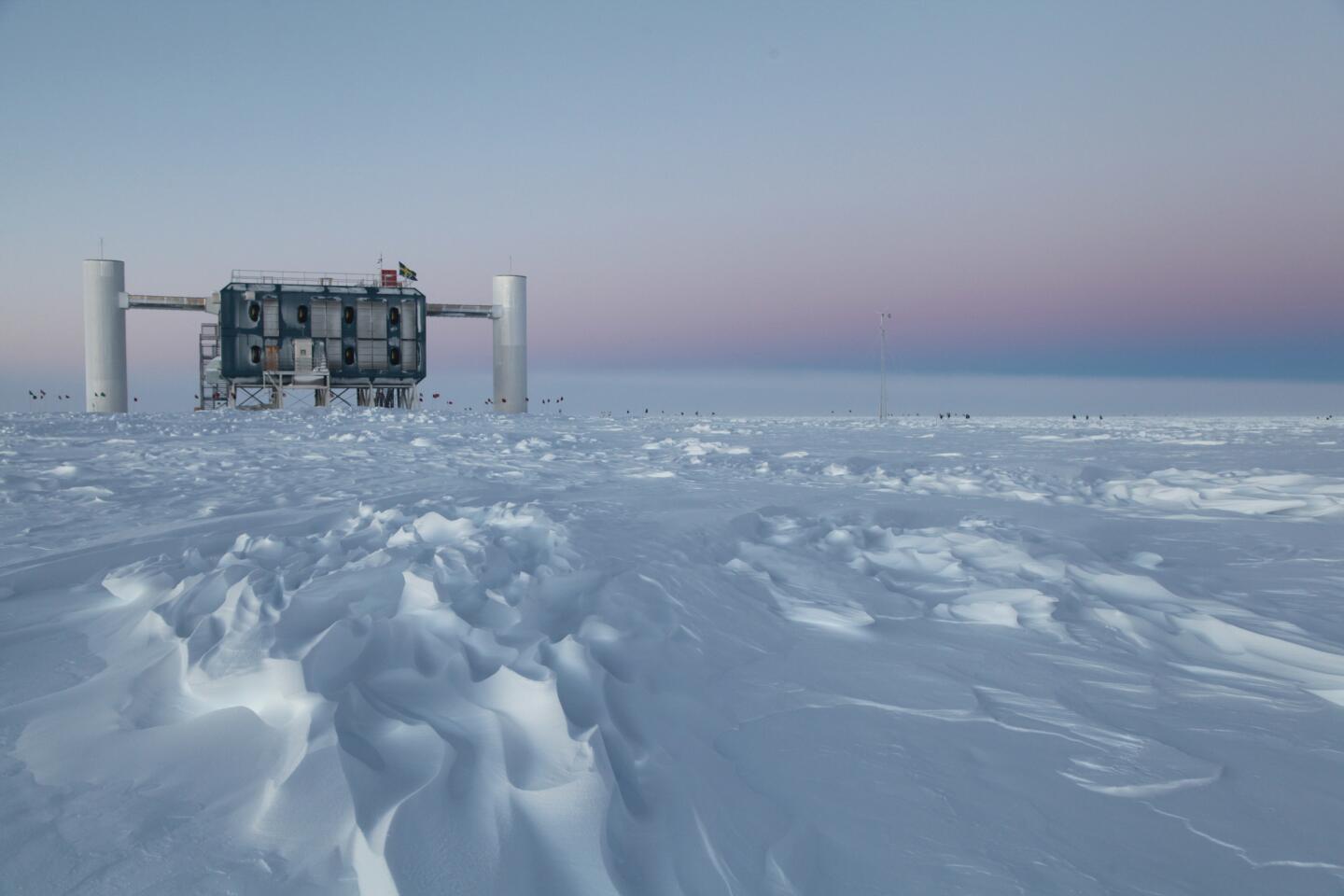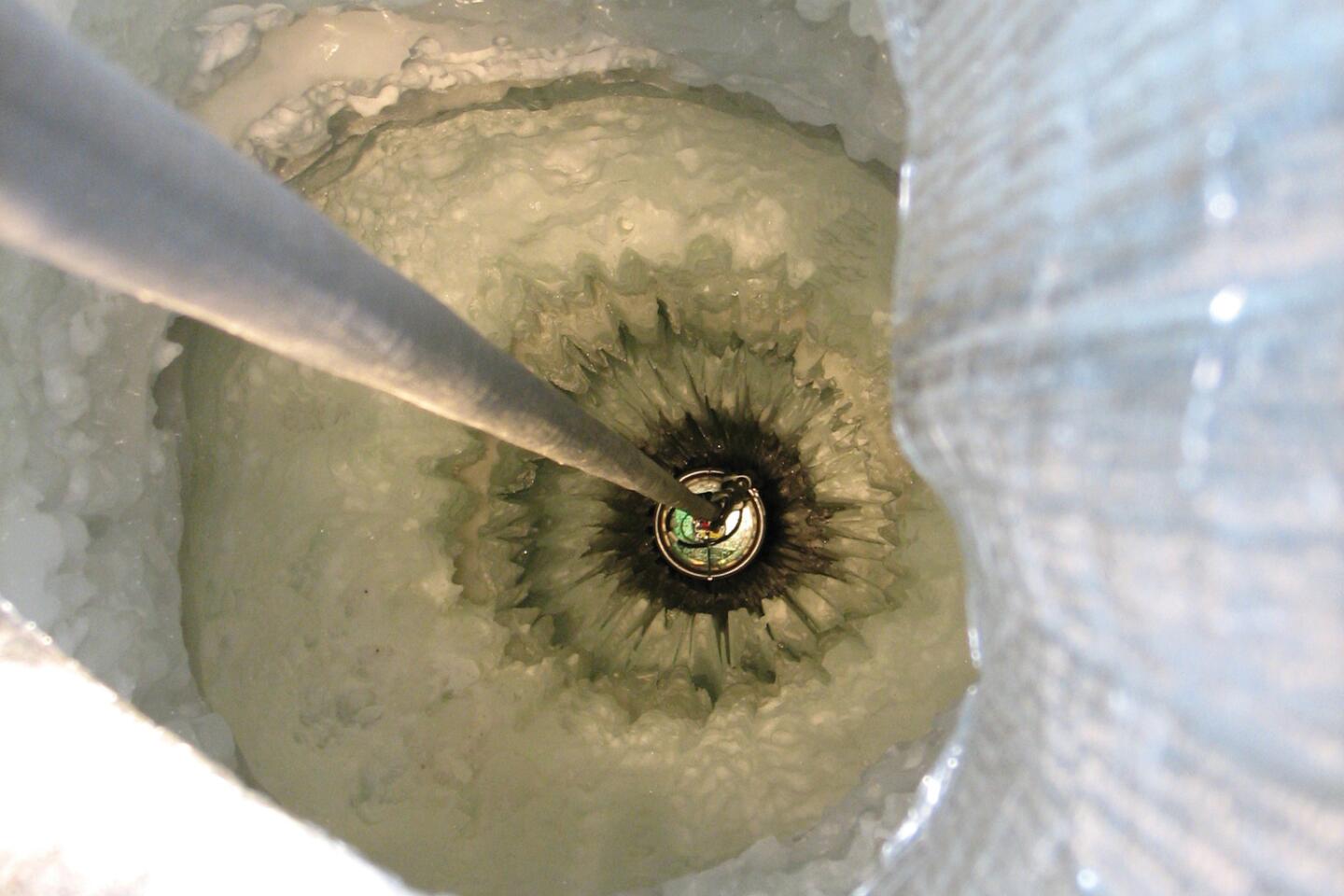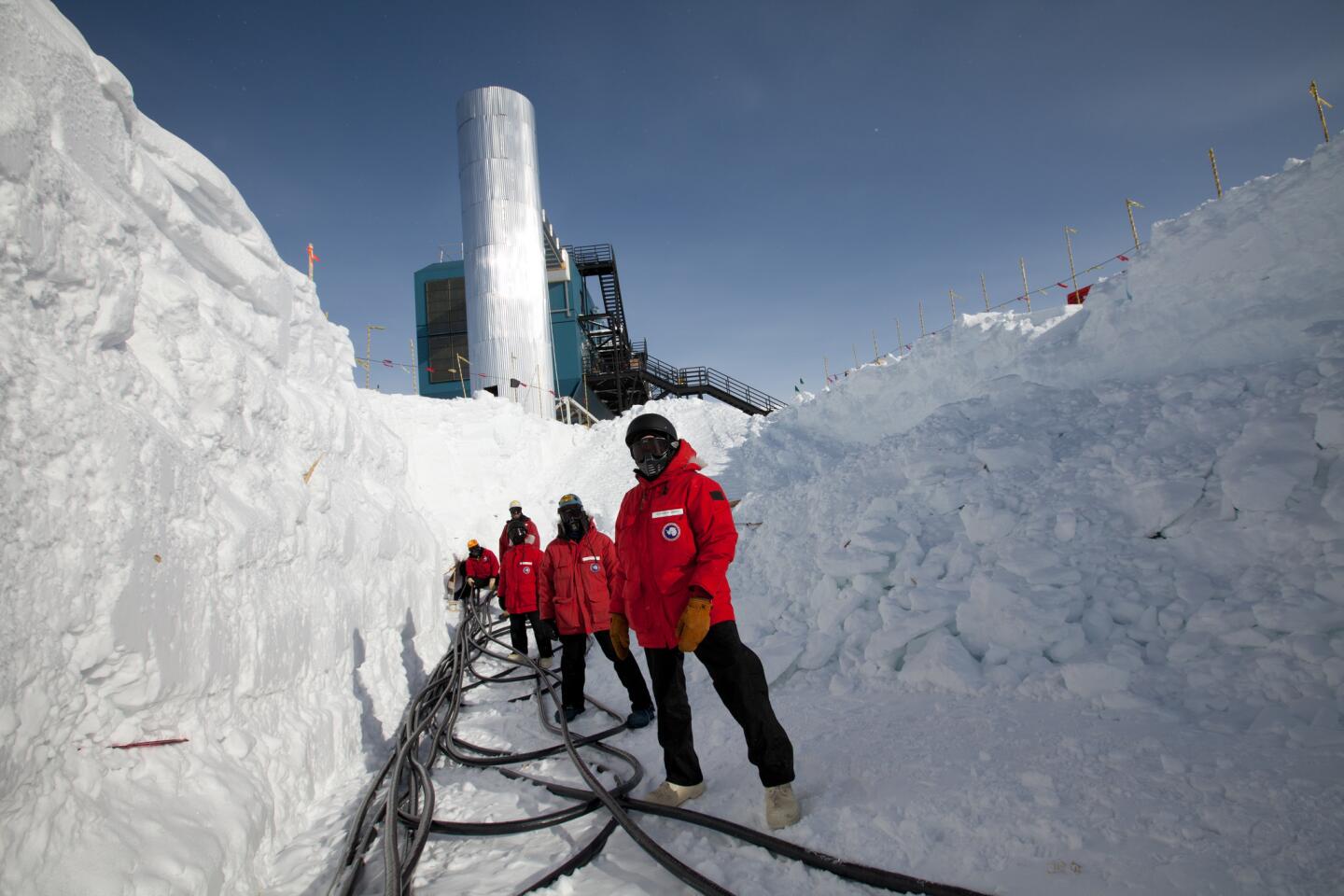28 neutrinos from outside the solar system open new era in astronomy
In a cosmos filled with darkness, scientists say theyâve discovered the first elusive neutrinos to come from outside our solar system in a quarter-century.
The groundbreaking discovery made beneath the ice of Antarctica opens a whole new window onto the high-energy universe -- one that will usher in a new era of astronomy.
Using a cubic kilometer of ice buried deep beneath the surface of an Antarctic glacier, the international team of astrophysicists known as IceCube has picked 28 neutrinos that are so energetic that whatever created them must have been extremely powerful, utterly mysterious, or both.
âThis is a landmark discovery -- possibly a Nobel Prize in the making,â said Alexander Kusenko, a UCLA astroparticle physicist who was not involved in the IceCube collaboration.
Until now, astronomers have observed the universe only through some portion of the electromagnetic spectrum. Every time they have looked at a new part of the spectrum beyond visible light, it has opened up a whole new way to view the universe.
PHOTOS: How to find neutrinos in underground ice
Radio waves led to the discovery of the cosmic microwave background radiation left over from the very birth of the cosmos. X-rays revealed black holes, neutron stars and other extremely powerful celestial objects. Both of these new tools birthed new telescopes and ultimately earned Nobel Prizes.
But those discoveries all depended on light. Now, after seven years of construction and two years operating, IceCube is the first âtelescopeâ to pick out interstellar neutrinos instead of photons -- and it could shed light, so to speak, on black holes, on dark matter and perhaps on yet-undiscovered phenomena in the universe.
Neutrinos are strange little particles, said Francis Halzen, lead scientist for the IceCube collaboration. The universe is filled with them -- billions pass through your finger every second -- but theyâre incredibly light, with less than a millionth the mass of an electron.
Neutrinos (along with muons, high-energy protons and other particles) are created in enormous blasts when something gigantic explodes. Scientists wonder whether dark matter -- that stuff we canât see or feel or touch but makes up a large portion of the universe -- might also give off neutrinos that we could detect.
INFOGRAPHIC: Searching for neutrinos at the IceCube Neutrino Observatory
There are important reasons for scientists to look for neutrinos. For one thing, theyâre neutral particles, which means they wonât fall prey to the magnetic field lines crisscrossing the universe. If a neutrino hits you, you know exactly where it came from.
Another reason is that a neutrino canât be stopped. It hardly interacts with matter, which means it wonât get blocked by clouds, or planets, or entire galaxies. That means scientists can pick up neutrino signals from spots where light would never be able to reach us.
Hereâs the problem: This standoffishness is exactly what makes neutrinos so hard to detect. On top of that, theyâre created all the time. Cosmic rays hitting the atmosphere create a shower of particles, neutrinos and otherwise, that constantly bombard detectors. Itâs incredibly difficult to âhearâ a neutrino over all that background noise.
Neutrino detectors, including one built under a mountain in Japan, take advantage of the Earthâs bulk to block out as much of the background noise as they can. Most particles -- protons, muons and even photons -- donât make it through. But neutrinos can.
PHOTOS: Amazing images from space
For this experiment, scientists decided to use a giant cube of pure and clear Antarctic ice. Into this underground cube they lowered 86 strings containing a total of 5,160 light detectors. When a neutrino hits the ice, it produces a flash of blue light that the detectors pick up.
After sifting through about 200,000 atmospheric neutrino hits, the scientists discovered 28 that they say could not have come from anywhere but outside of the solar system. These interstellar neutrinos seem to come from all over the sky, not from any particular location.
But 28 is a small sample, the scientists say. The hope, Halzen said, is to create a whole map of the universe, sketched out in neutrinos, and see what turns up.
The find is far more exciting than the discovery of the elusive Higgs boson, which took the physics community by storm last year, said John Learned, a neutrino physicist at the University of Hawaii.
âFinding the Higgs was really boring,â Learned said. âItâs a great triumph, but ... we didnât learn anything we didnât already know. â
ALSO:
Flavor-flipping neutrinos: Key to universeâs anti-matter mystery?
A hunt for dark matter in a former gold mine
Supernova explosion emitted record burst of gamma rays








